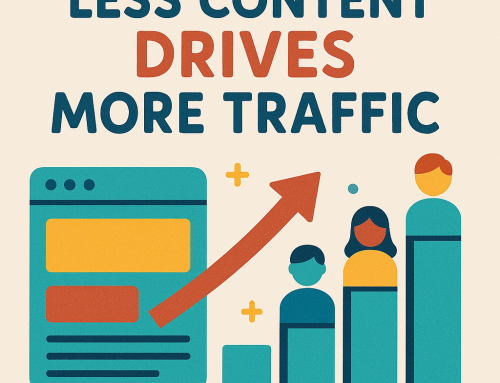 No matter if you’re a lawyer or agricultural field surveyor, your website and your services should be worded in a way that everyone on the world wide web can read and understand it. Ask yourself – Is my content smarter than a 5th grader? Don’t worry – we’re not exactly asking you to “dumb it down.” In fact, we get that you want your content to be smart and informative. This is more about making your web content reader-friendly. Stop trying to be the Charles Dickens of copywriting and begin crafting readable content.
No matter if you’re a lawyer or agricultural field surveyor, your website and your services should be worded in a way that everyone on the world wide web can read and understand it. Ask yourself – Is my content smarter than a 5th grader? Don’t worry – we’re not exactly asking you to “dumb it down.” In fact, we get that you want your content to be smart and informative. This is more about making your web content reader-friendly. Stop trying to be the Charles Dickens of copywriting and begin crafting readable content.
What is Readability?
First off, let’s discuss what readability is when it comes to web content. You should know a few literacy facts before you begin writing. For example, National Law Review states that the average reading level in the United States is a seventh grade level with 1 in 5 American adults who can only read at a fifth grade or lower level. Creating something that is readable for a fifth grader is not just a catchy title for our blog; it is true. You need to write your content so that a fifth grader can read and understand it.
Now, not all of your readers will only be able to read at a fifth grade level, so let’s look at a few ways to make your content easier to read for everyone.
1. Stay Away from the Robo-Boogie. You want your content to rank in the search engine so people can find you, but if you write your content for a search engine you will find readers leaving ASAP. The people you are writing for are not the robots that pop your site up in a search result. If you write predominately for a search engine, your content will not be reader-friendly and will sound awkward because of all the keywords you stuff throughout your content. Don’t do that! Focus on writing on a personal level with a conversational tone. This makes your content easier to read and people can actually relate to you, which is what you want.
2. Jargon-Schmargon. A key part of keeping your content reader-friendly is to stay away from technical jargon. Yes, you may be writing content for legal or insurance companies, but you need to stay away from all the legalese. The general population will not understand most of it, and you want them to be able to relate to what they are reading and to seek out the company you are writing for. If you constantly use technical terms in your content, people will feel like your business will not work well with them and they will look elsewhere. Don’t let that happen! If you have to use institutional jargon, then give brief explanations or say that a friendly associate is willing to help people understand the terms. Make sure people will feel helped.
3. Utilize those Sub-headers. Sub-headers make reading any piece of content a cinch for readers. Copyblogger says that sub-headers engage readers throughout the entire piece and provide mental breaks for them. Sub-headers are like chapters in a book. Your mind knows to rest once you get to the next chapter, so too with sub-headers. You can use sub-headers to grab attention, to tell some information about the paragraph, and to provide an outline for readers. Many readers really enjoy outlines as they can read ahead and know what to expect throughout the article and if the article is interesting. This also helps for the readers who will not read the whole article. They will get the information they want simply by reading your sub-headers. If you don’t provide this, they’ll move on to other content.
4. Lists For the Win! You’ve seen them all over Facebook – lists are an absolute favorite of readers right now and they organize thoughts in short, concise sentences, sometimes offering descriptions. Lists are great ways to get your ideas across to your readers while keeping them engaged. They provide people with enough information and many will read a post in its entirety if it is in list format. Lists are easy to scan and if they are made in a bulleted format, they will stand out from the rest of your content. If someone is scanning your content for the bare information, that bulleted list is going to capture his or her attention pretty quick!
FTW – Simple Content
Matt Cutts recently came out and said (just this February 2014) that it’s better to write with “content clarity” rather than using technical language. He said to focus on clarity of writing and simplicity in words, rather than jargon or scientifically-important language. Way to back us up here, Matt!
By following these steps, you will be able to craft incredible and readable content. You will not have to sacrifice your information or feel that you are “dumbing down” your content because you will still be creating something that is done well. Readability is all about engaging readers, regardless of reading level, and helping them to learn more about your product or services in a simple, yet informative way. It is never too late to start crafting your wonderfully reader-friendly content!
Article by Julia McCoy





